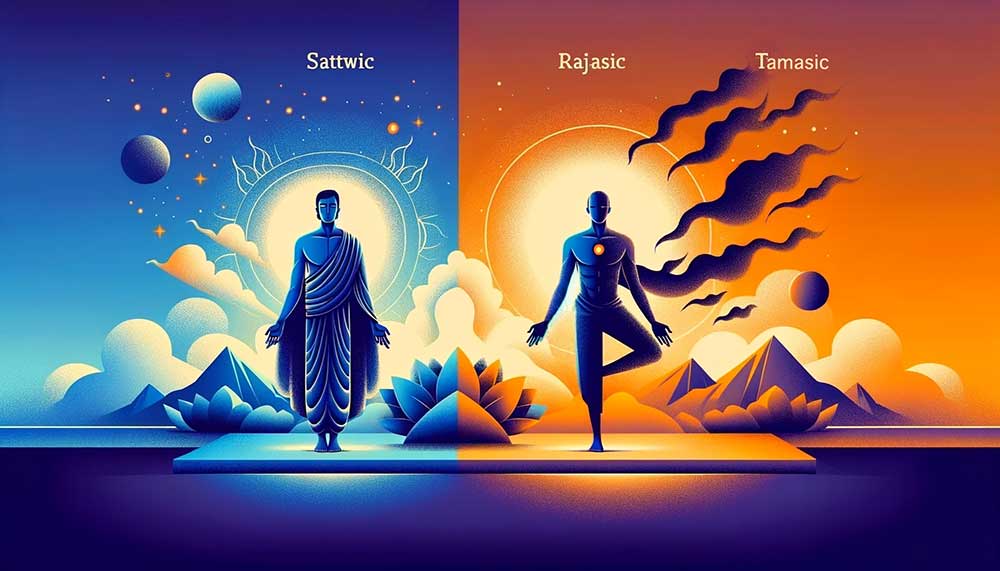Understanding the nature of willpower in the Yoga-Vedanta framework is key to personal growth and spiritual advancement. The philosophy delineates three types of will: Sattwic, Rajasic, and Tamasic, each representing different facets of human nature and consciousness.
. . . . . . . . . .
Sattwic Willpower: The Path to Enlightenment
Sattwic will is considered the purest form of willpower. It’s characterized by selflessness, compassion, and a desire for spiritual enlightenment. This type of will leads to actions that benefit others and promote inner peace. Individuals with a dominant Sattwic will are often seen as calm, composed, and enlightened, drawing strength from their inner mystical resources. The practice of Satwic willpower aligns with the highest ideals of Yoga-Vedanta, fostering a life of harmony, balance, and spiritual awakening.
. . . . . . . . . .
Rajasic Willpower: The Drive for Success
Rajasic willpower, in contrast, is driven by ego and ambition. It’s the force behind the pursuit of material success, power, and recognition. While this type of will can lead to significant achievements, it often comes at the cost of internal peace and spiritual growth. Rajasic individuals are dynamic and assertive, but they may struggle with competitiveness and a constant need for external validation. Balancing Rajasic will with Satwic qualities is essential for holistic well-being.
. . . . . . . . . .
Tamasic Willpower: The Shadow Side
Tamasic will represents the lowest form of willpower, stemming from negative emotions like anger, jealousy, or a desire for revenge. This type of willpower leads to destructive actions and a life marked by turbulence and dissatisfaction. Tamasic will is a barrier to spiritual growth, as it clouds the mind and distances the individual from their true nature. Recognizing and transforming Tamasic tendencies is crucial for anyone on the path of Yoga-Vedanta.
Harnessing the positive aspects of willpower while mitigating the negative is a delicate balance. It involves continuous self-awareness, discipline, and the practice of Yogic principles. The journey towards mastering one’s will is challenging but ultimately rewarding, leading to a state of higher consciousness and fulfillment.

